All about the emergency services in Norway. What each one does, and how to contact them.
We all hope we never need it. But one day, you may just need urgent assistance in Norway.
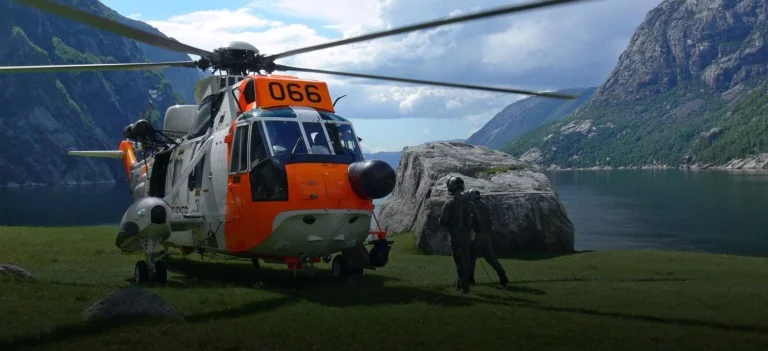
Whether you live in the country or are just visiting, it's important to know the procedure for contacting emergency services in Norway. Here's what you need to know.
Table of Contents
Responsibility for emergency response in Norway
The Ministry of Justice and Public Security (Justis- og beredskapsdepartementet) is responsible for the preservation and development of basic guarantees of the rule of law. Norway's Minister of Justice oversees the Police, which is run by the National Police Directorate.
The Norwegian Directorate for Civil Protection (DSB) reports to the Ministry of Justice and Public Security. Among DSB's responsibilities include local, regional and national preparedness, emergency planning and fire safety. They are also responsible for Nødnett, an emergency radio network built specifically for rescue and emergency users.
Norway's health service is overseen by the Ministry of Health and Care Services and executed by the Norwegian Directorate of Health. Health services are delivered through four regional health authorities, which in turn manage a series of hospital trusts.
Now, let's look in turn at each of the services, starting with the most important information:
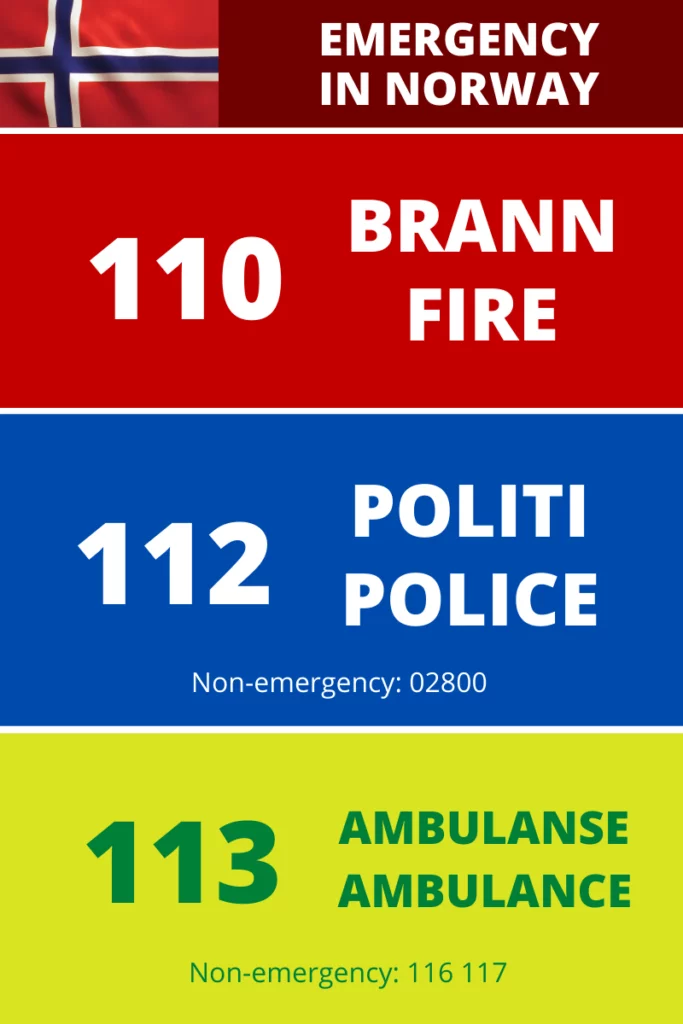
The Norwegian Police force
In an emergency, you can contact the police in Norway by calling 112. For all non-emergency queries, contact the police central switchboard on 02800.
The emergency number should be used to report criminal offences where there is a danger to life. It should also be used if there is a risk of evidence being destroyed.
Read more: Crime in Norway
The Norwegian Police is divided into 12 districts, each with its own operation centre to manage and coordinate the police force in the district. The operation centres controls the mission handling and communicates with citizens via the 112 number.
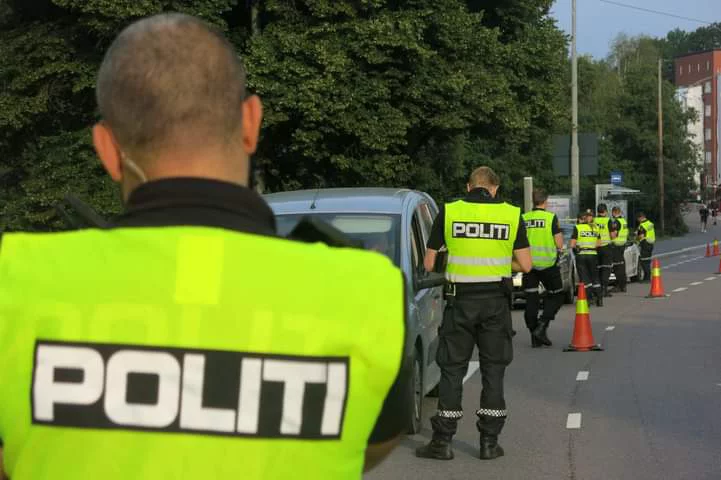
Norway's Police force is also the contact point for search and rescue situations. Depending on the location, local police may have the use of police boats in addition to land vehicles.
The Norwegian fire service
In an emergency, you can contact the fire service in Norway by calling 110. Your call will be routed to the closest of 22 operation centres.
Municipalities are responsible for fire preparedness in Norway. At present, over 300 fire departments with around 12,500 firefighters provide fire services for the Norwegian population.
However, only approximately 3,500 of these are full-time professional firefighters. The rest are part-time or volunteer firefighters.
Ambulance and urgent healthcare in Norway
In an emergency, you can call for an ambulance and/or urgent healthcare support by calling 113. This is for life-threatening situations only.
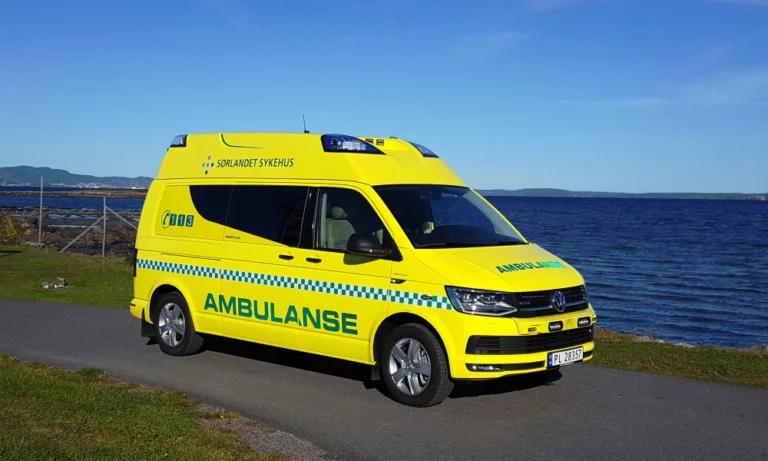
This includes: Onset of facial or arm paralysis, onset of language disorders such as slurred speech, sudden or unexplained loss of balance, unconsciousness or reduced consciousness, chest pains lasting more than five minutes, when taking the heart medicine nitroglycerine has less effect than usual, unexpected discomfort in the chest area, and general malaise and nausea.
For other health situations that are not life threatening conditions, you should in the first instance contact your GP. They will assist the situation and advise on next steps.
If your GP is closed and you cannot wait until it is open, you can call the national out-of-hours urgent care number 116 117. This will route your call to the local legevakt, or urgent care centre.
Issues that the urgent care centre can help with include: high fever (particularly in children), moderate breathing difficulties, acute illness or serious deterioration, unresponsive or exhausted children or adults, serious mental illness, suspected pregnancy complications, injuries requiring stitches, and suspected fractures.
Norwegian air ambulance
As a country with vast coastline and mountain ranges, Norway needs an air ambulance service. In fact, the service supports up to 20,000 patients every year.
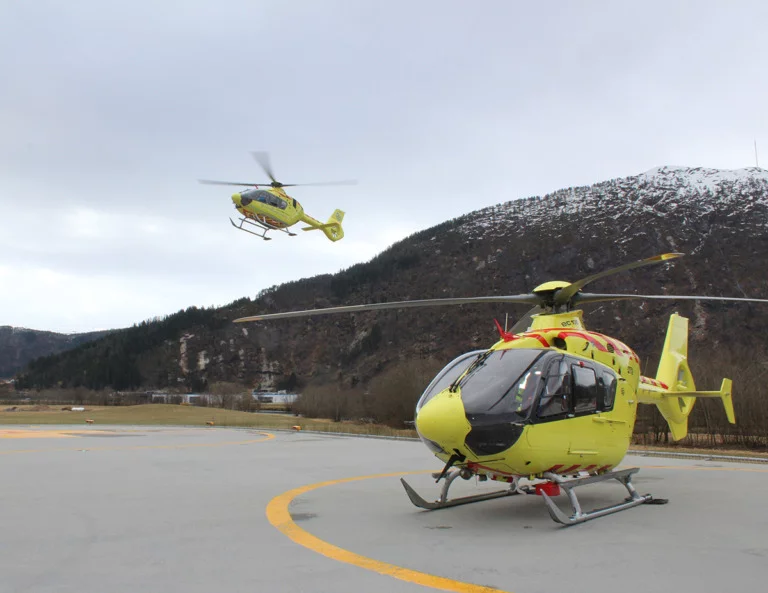
Dedicated planes are available at seven airports, while there are 14 helicopters on standby across the country, usually at hospitals. The service also depends on six of the state's search and rescue helicopters to offer full national coverage.
Read more: The Norwegian Air Force In Pictures
Norwegian search and rescue service
Norway is a long, narrow country extending far above the Arctic circle. It has a harsh climate and unforgiving waters, which present major challenges for search and rescue.
As such, rescue services in Norway and Norwegian waters are carried out through a cooperation between government agencies, voluntary organisations and private companies. This was seen in action during the Gjerdrum landslide in December 2020.
Operations are coordinated either directly from one of the two Joint Rescue Coordination Centres (JRCC) in Bodø and Sola, Stavanger, or through one of 28 regional centres.
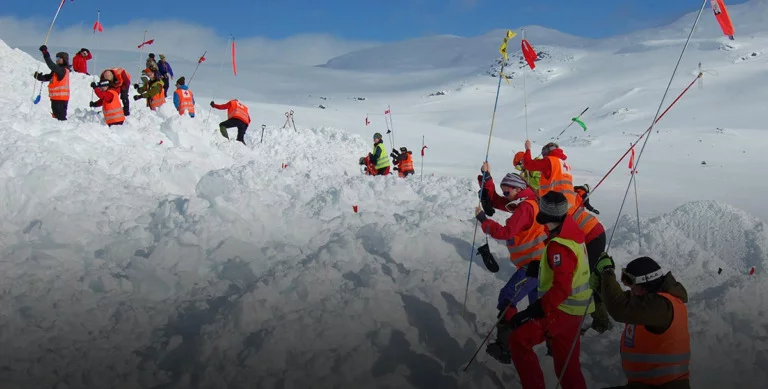
Among the resources available include six Sea King search and rescue helicopters. The Norwegian coast guard are also available to assist. These are available 24/7 and are coordinated by the Joint Rescue Coordination Centres in Bodø and Sola, Stavanger.
The service is ultimately under the control of the Minister of Justice and Police. This means citizens should call the Police on 112 in situations where search and rescue may be required, including missing person cases.

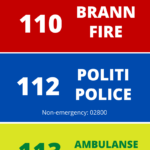

Several years ago, visiting Molde from the U.S., my husband became very ill. Our hotel called an ambulance & he was taken to a hospital for tests. Everyone was so kind and helpful. A scary experience is now a good memory because of the efficient system and kind people.
Hello David,
I am from the USA and would love to work in Norway. I have experience as a wildland firefighter, but I haven’t seen any equivalent positions in Norway – it seems as if fire stations get rolled out to both structural and forest fires.
In the USA, a wildland firefighter doesn’t need any higher education, but with multiple years of experience in such an intensive and physically demanding field of work, is it possible for the educational requirement to be lifted in this scenario, if I’m applying for a skilled worker visa? The physical qualifications are high in the USA, and wildland firefighters must have an Incident Qualification card.
My second question is, would I even have a chance to get a full-time job in the fire service? Most fire stations in the USA are similar for cities – most firefighters are volunteers. But with wildland, because it’s so specialized, we’re all employed.
My third and final question is if Norway has any specialized wildfire services, or if city and wildland fires are fought by the same workers. Just wondering if I’ve missed something there.
If possible, I’d like to chat via email and see what resources are out there that I’m not finding.
Thank you!
Hi, I can see from a very quick search that there’s a lot of information out there online. It’s all in Norwegian, because fluency in Norwegian is essential for such a critical job. In fact, it looks as if a Norwegian exam is part of the application criteria.